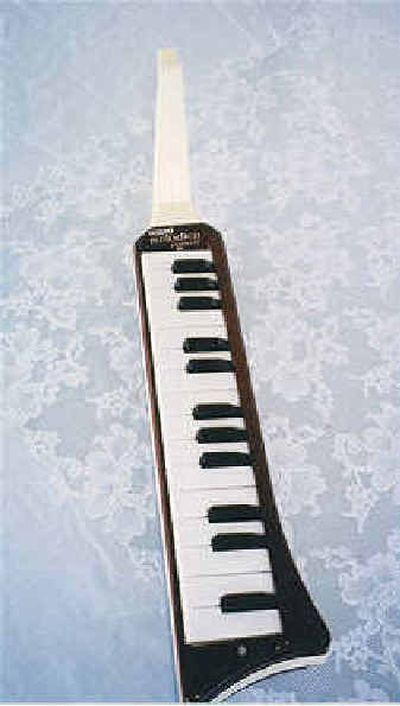Instrument’s value lower because of missing items

Dear Collector: Enclosed is a photo of an old mouth piano that my aunt gave me. She played the instrument in the mid 1900s. I was wondering if you can tell me more on the history of this instrument?
Developed by noted harmonica maker Hohner in 1959, the melodica is played by air blown through the mouthpiece (similar to a recorder or flute) passing over reeds (like the harmonica), while notes are selected by operating keys similar to those on a piano or accordion. The more keys, the greater the range. Yours has 27, while others have as many as 36.
Though relatively new on the musical scene, the melodica, which can also be held on the player’s lap and operated via a tube, has already been adopted by jazz and rock musicians, and is now a favorite in Klezmer bands. Sad to say, your particular melodica lacks its original case, extra mouthpieces and instructions; making the current value about $20-$30.
Dear Collector: I have from my childhood a small Roy Rogers ring, in pretty good shape. I don’t want to sell it, but would like to know its value?
This was probably an offering from one of the large cereal manufacturers such as Quaker or Post, and could date from 1938 onwards, depending on your age. Today’s value is $20 to nearly $200.
Dear Collector: I inherited dinnerware from my grandmother when she died in 1963. The name on the back is “Harker Pottery, Est’d in 1840” with the name Pate & Pate on either side.
Pate sur pate (paste on paste) is a decorating process using applied layers of watered down potter’s clay called slip. If you take a closer look at the maker’s backstamp, you’ll see it also says “Resists Acid, Detergents, Craze;” a term used by this East Liverpool, Ohio firm beginning in the late 1940s.
Dear Collector: I’ve just started collecting Art Nouveau and Art Deco type jewelry, and would like your opinion on what price guide to use.
While it does not focus on one specific style, “Costume Jewelry: Identification and Price Guide” (Krause, 2004, $24.99) by Leigh Leshner, is a well illustrated reference with examples from the Victorian era to the 1960s.
Dear Collector: Can you identify the country of origin and value of this old coin?
You have an 1892 silver 6-pence piece from South Africa. The person appearing on front is Paul Kruger (Stephanus Johannes Paulus Kruger), the President of Transvaal, known as “Oom” or Uncle to his nation. This coin shows its age, so value is no more than $2.00.
Dear Collector: I found this beer can among some things at a yard sale; how old is it?
Dawson, a Massachusetts brewery started in 1899, filled your half quart Diamond Ale container in its New Bedford plant sometime in the early 1960s. The slogan “Time out for Dawson’s” was heard or seen everywhere throughout New England until the company folded in 1967. Probably price on your can, in excellent condition, is $150-$200, according to one breweriana guide.
Recommended reading: “A Passion for Antiques,” Barbara Milo Ohrbach (Clarkson Potter, 2004, $30.00). “Collector’s Encyclopedia of Pendant & Pocket Watches: 1500-1950,” C. Jeanenne Bell, C.G. (Collector Books, 2004, $24.95). “Cartridges of the World,” Frank C. Barnes (Krause, 2003, $27.99).